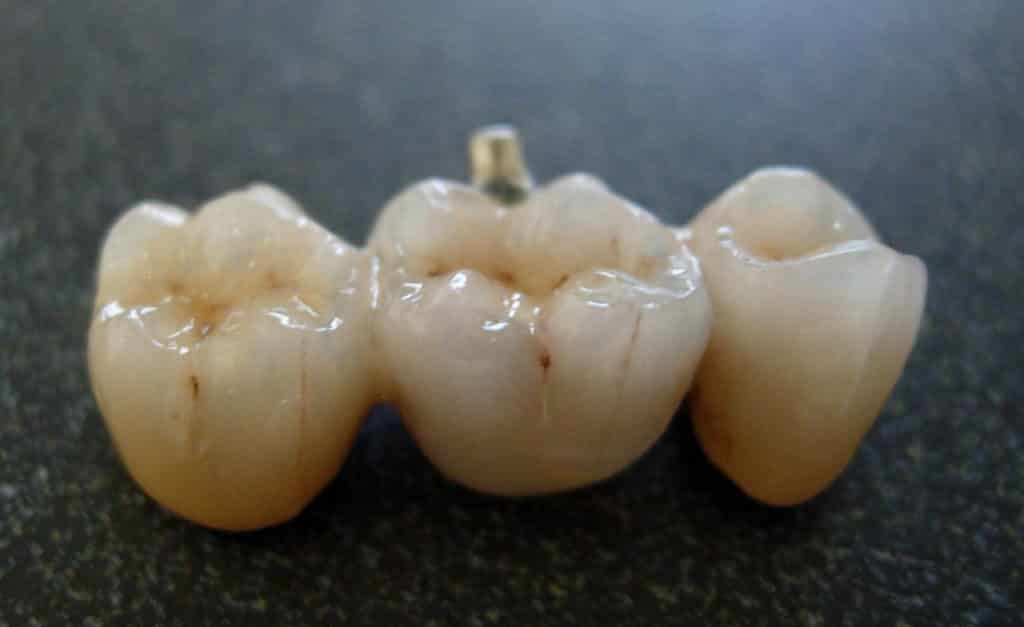Teeth problems are a common occurrence in modern day society.
The mouth is commonly referred to as the window to one’s health and the compromised health of teeth and gums can have a detrimental effect on individual optimal health and well being.
Thankfully, when it comes to tooth decay or missing teeth, there are multiple pain-free options available to rectify the issue. One of the most popular and effective method is dental bridges.
What Are The 4 Main Types of Dental Bridges?
The four main types of dental bridges are pain-free and are explained below.
1. Traditional Dental Bridges
Traditional dental bridges are the most common type of dental bridges. The bridge contains at least one fake tooth, which is known as a pontic. The pontics are held in place by crowns which are attached to the teeth on either side of the tooth that is missing.
Traditional dental bridges are extremely strong and can even replace damaged molars. The attachment process of traditional dental bridges isn’t as simple as other methods.
A dentist is required to remove teeth enamel to make way for the crown insertion. Tooth enamel does not naturally replenish itself, so those who opt for a traditional dental bridge will always need crowns.
2. Maryland Dental Bridges
The alternative to traditional dental bridges, Maryland bridges contain fake teeth that are secured by porcelain or metal. Maryland bridges are secured to the backs of the teeth next to the missing or decayed which means that the teeth they are secured to do not require filling.
Maryland bridges rely heavily on the strength of the healthy teeth they are secured to. For those looking for a less invasive dental bridge option than traditional, the Maryland is an excellent choice.
3. Cantilever Dental Bridges
Cantilever dental bridges are a popular option for filling in the gaps of entirely missing teeth. A similar concept to traditional bridges, the cantilever only relies on one tooth for support, not two.
The enamel will still need to be removed from the tooth that is supporting the bridge to ensure stability.
Cantilever bridges may or may not last as long as other bridges. We’re very careful with case selection when considering cantilever bridges.
4. Implant-supported Dental Bridges
Implant-supported dental bridges are a good option for people needing to replace multiple teeth that are missing. The bridge is supported by actual implants.
Implant-supported bridges create a feeling of security as they are attached to the mouth and look and feel just like the rest of the natural teeth.
All types of dental bridges are expected to last up to 10 years, if not more. It is vital to care for them to increase the longevity of the bridges. Brushing teeth thoroughly twice per day is a good start to increasing the lifespan of dental bridges.
Flossing daily will help to eliminate any foreign substances that may compromise the dental bridge or cause damage to other existing teeth and eating a diet that is not harsh on teeth (e.g. low in meat) will help to protect the dental bridge.
Regular dental visits and professional cleans will also ensure that all forms of dental bridges stay secure and of premium quality for as long as possible.
Our Latest Posts
Practical Tips For Long-lasting Implant Success
Dental implants are a strong and visually appealing solution for replacing missing teeth. However, maintaining them requires regular care and maintenance. Good dental hygiene practices
Benefits Of Maintaining A Regular Dental Checkup
Maintaining good health is a comprehensive approach, encompassing various aspects of our lifestyle, and one of the most integral yet often neglected parts is oral
What Is Bone Graft For Dental Implant?
When considering the journey towards a dental implant, one critical step often surfaces in discussions with your dentist: the bone graft. This procedure may sound
Is Invisalign Worth the Investment?
When it comes to straightening your teeth, you have various options to consider. One increasingly popular choice is Invisalign, often marketed as a convenient and
How Clear Aligners Can Help Restore Your Smile
A beautiful smile can work wonders for your self-esteem and confidence. If you’re considering clear aligners as a solution to straighten your teeth, you’re in
How to Treat Gum Disease at Home
At some point in our lives, you may experience swollen, red and bleeding gums, which are common signs of gum disease. This disease is caused


